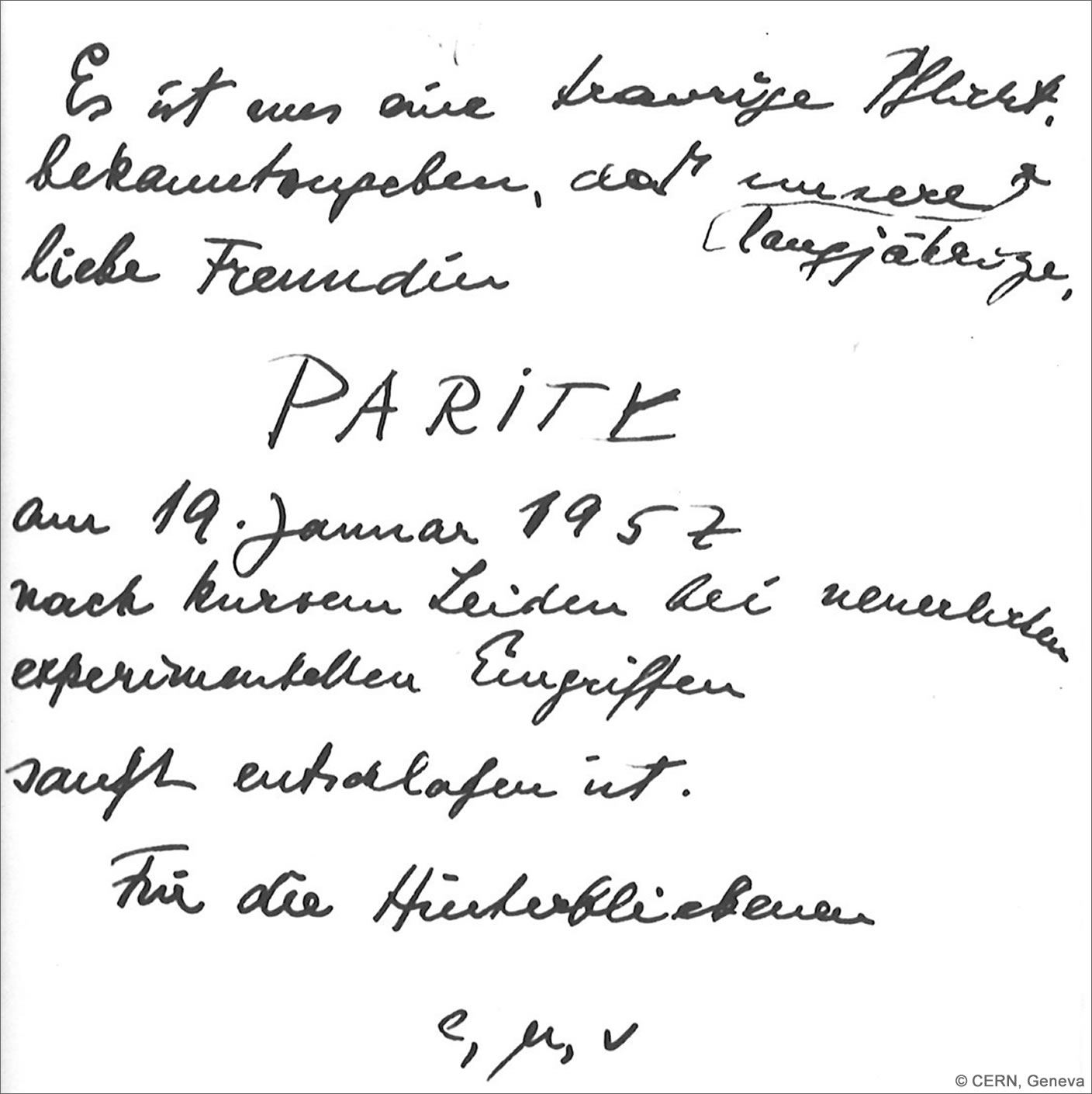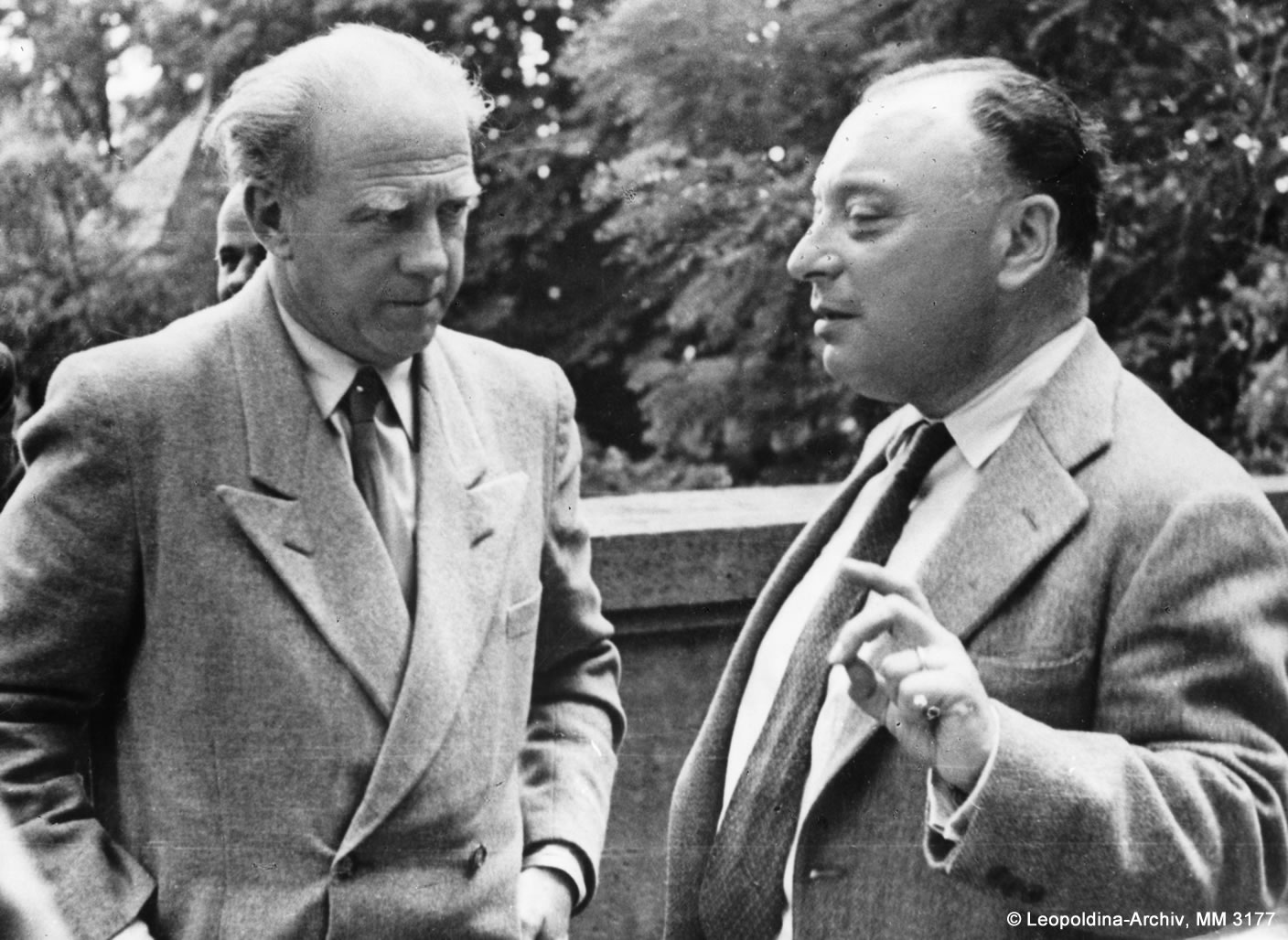Symmetries and violation of parity

After World War II, and again in Zurich, Pauli also occupied himself with problems centring on symmetries in the laws of particle physics. These symmetries are coupled with characteristics of the corresponding mathematical formalisms. A distinction is made between charge conjugation (C), parity transformation (P) and time reversal (T). In 1954 he formulated the "CPT theorem" that postulated the general invariance of the product CPT. In early 1957 measurements showed that parity was not conserved during beta decay. This was called "violation of parity by the weak interaction". Pauli did not expect this result and it came as a shock to him, which he worked through in a contribution to the generalisation of the Fermi theory of beta decay.
Failure of the "world formula"

In the last year of Pauli's life, there was also a heated dispute Werner Heisenberg. They planned a joint publication on the theory of elementary particles, intended to make headlines as the "world formula". But because of criticism chiefly from younger physicists, Pauli withdrew from the common enterprise and it went no further than an unpublished manuscript.